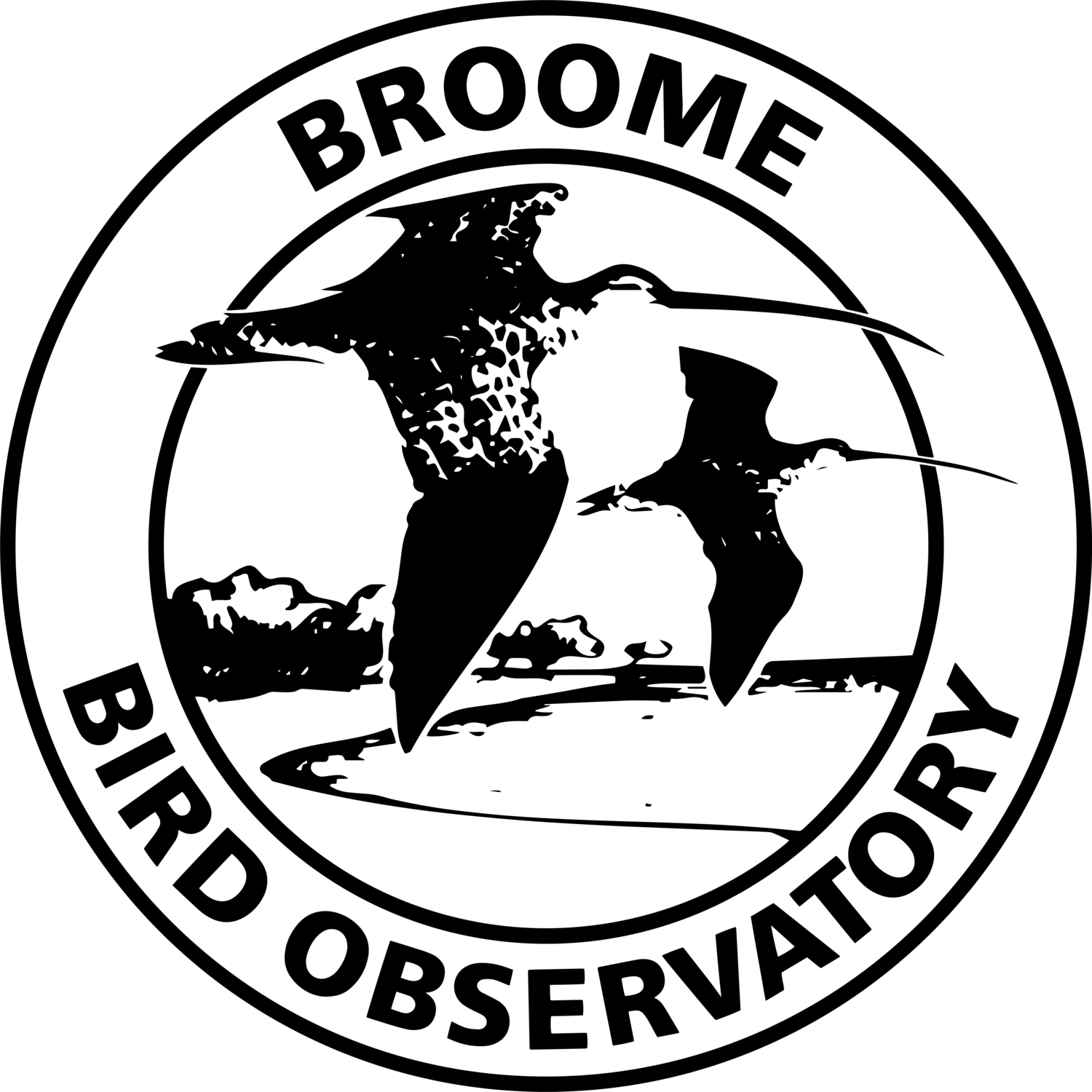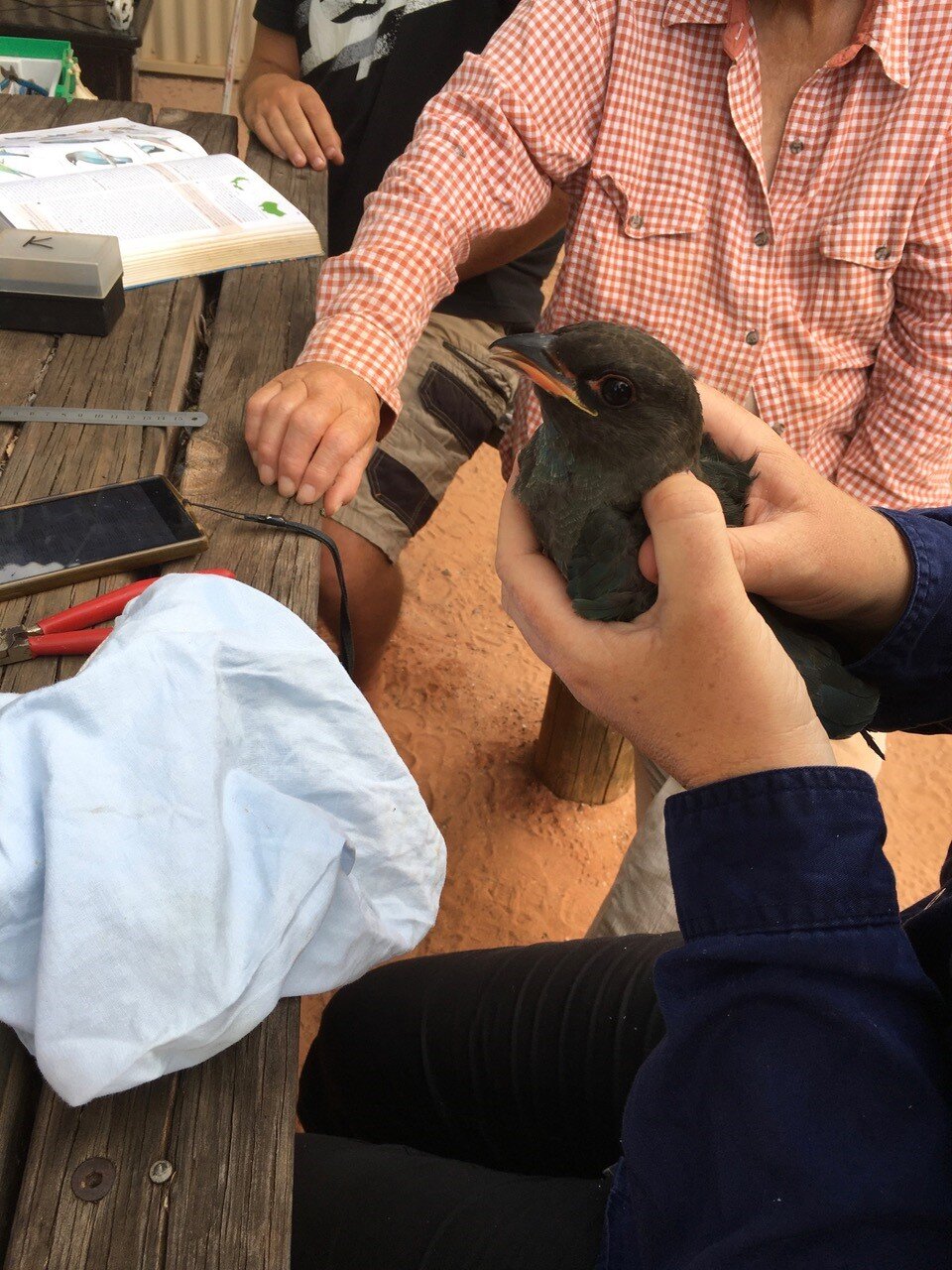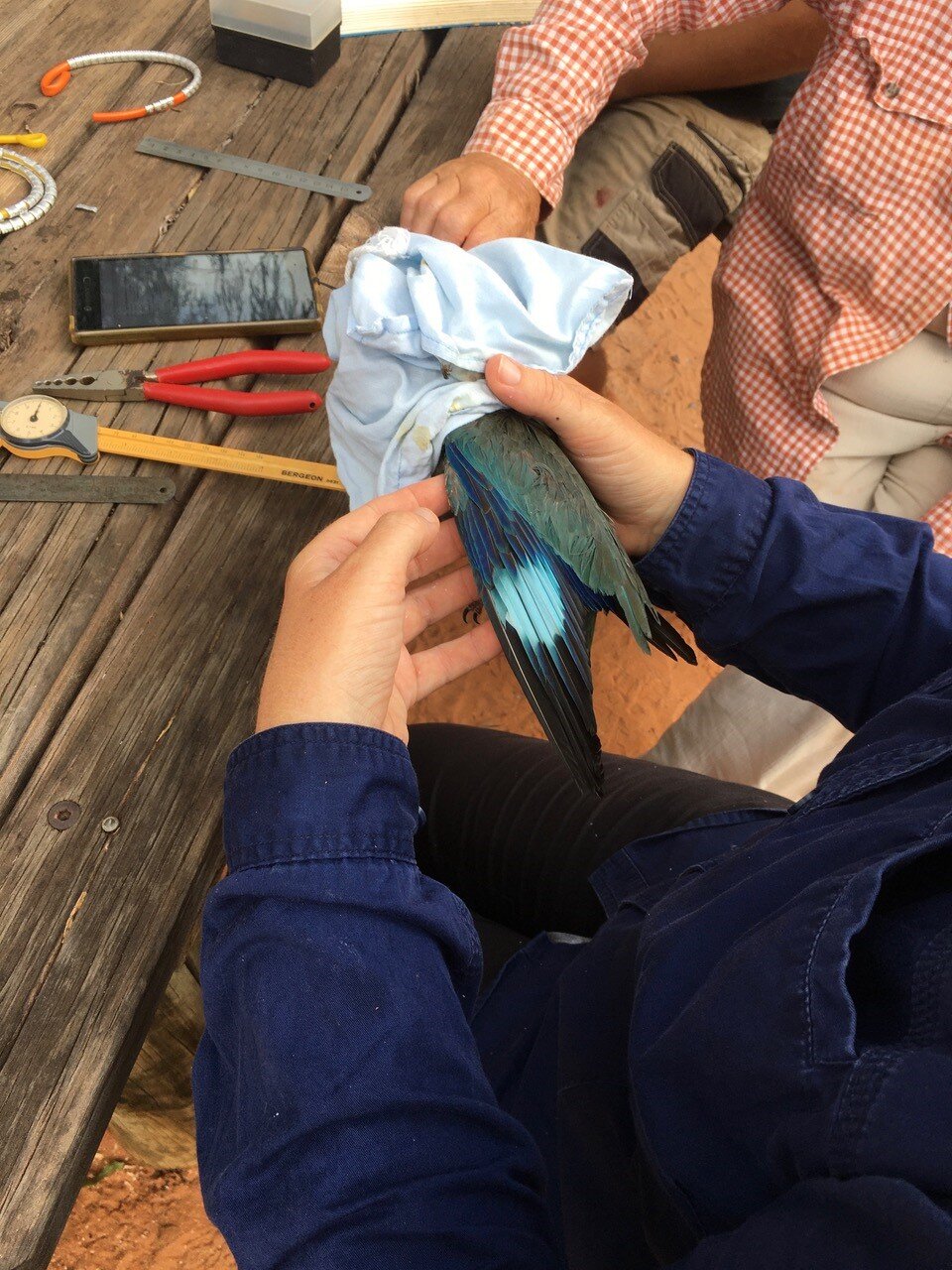Ringing (or banding) in the new year!
The beginning of each season at the BBO is both exciting and challenging. The peak of the Wet season which usually means fewer visitors and a flooded road happily coincides with the Christmas break, a chance for the wardens to see interstate family (although sadly not international family) and take a dip in some less - croccy water (albeit a fair bit cooler). It’s a good thing too that the new season begins after we have had a chance to relax as the start of each new season brings lots of hard yakka that needs to be done around the grounds.
This Crab Creek road once it dried up enough for us to get out to take a photo.
Over the wet season, when the humidity hovers at 90% the environment around the BBO comes alive. Grasshoppers multiply, taking it upon themselves to single handily strip any vegetation of fresh green shoots – including the wardens lime tree! Alien fungus appear overnight and seem like contemporary sculptures among the leaf litter. Ants have made fortresses of pindan, guarded ferociously with thousands of biting soldiers. Frogs and geckos have made their presence known with their shrieks and chirps and cries and tiny parcels of poo left in the most unreasonable places. The curator of all this madness – the weather, adds its own touches with swales cut out across the grounds by monsoonal rain and the familiar orange wash of pindan coated across all surfaces.
Green and blue! The totally refreshed plains after the January rain.
In the thick of it and keeping the wardens mind off the job was Jo our wet season caretaker. Jo’s job description is really to be a presence at the BBO, keep the frogs out of the toilets to a reasonable extend and tidy around the BBO when needed. And that’s usually all about all caretakers need to do while enjoying the surroundings.
Unfortunately for Jo a couple of key parts of the BBO’s infrastructure (presumably, inspired by the general global climate of 2020) un-expectantly decided to stop working. Our caretaker Jo went above and beyond and fixed, called, arranged, disentangled it all in her stride!
On our return to the BBO we had about a week before the annual Australasian Wader Study Group (AWSG) made their pilgrimage to Roebuck Bay. This expedition was modified due to the border closures so a much smaller team attended, however WA is lucky enough to have an excellent crop of birders and banders to draw from. This was the 40th AWSG expedition to Roebuck Bay which is an amazing achievement. Of course a large part of this has to do with the ever-enthusiastic Dr Clive Minton who passed away late 2019. It was lovely to see Clive’s legacy continue despite the border challenges and celebrate him as we swapped and shared our own ‘Clive stories.’
Border closures meant fewer participants - but we still loved hosting AWSG in 2021.
Ben and Tegan setting up the mist-nets in the evening (not captured: swatting at the 10,000 mozzies)
The AWSG as usual travelled to Eighty Mile Beach in pursuit this time of Oriental Pratincole. On their return to the BBO they regularly did mist-netting around the grounds. Dr Tegan Douglas lead the banding team and watched over as others gained their banding experience. The real treat was on the final mist-netting session a much-anticipated Dollarbird had made its way into the net! The young bird was processed by Tegan, the iridescent beauty of its plumage was in stark contrast to the guttural cacklings of the Dollarbird – not so pleasant up close.
The BBO banding table - please note multiple tea cups to sustain the team.
We were lucky to join AWSG team on their afternoon birding trips to Taylor’s Lagoon and the mangroves. Another mist-netting morning took place in Coconut Wells, just out of Broome. Sitting in the shade of the mango trees with the breeze straight off the Indian Ocean and a few fairy-wrens in hand, we were set!
Nyil giving some of the AWSG team a sneak peak of our new discovery centre (you’ll just have to wait a few more months..)
Among this action-packed week we chipped away at getting the BBO ready for the tourist season. Our Assistant Warden Ben arrived at the same time as AWSG so we were really pleased he was able to make the most of getting involved with the work of the researchers. With new volunteers on the team, it’s a great excuse to check out the surrounding environment. Some areas of the BBO are either visited irregularly or are hard to access this time of year so we make an effort to see what state they are in for our upcoming tour season.
We hit the road at 4:30 am on Thursday morning to investigate Roebuck Plains Station. This property, an expansive plain to the north-east of the BBO floods in the wet season and with it brings a mass of birds and a dramatic chnage to the landscape. This area named Kidneybean Claypan will become the focus of our Bush and Plains tour once the plains are dry and accessible to vehicles.
First thing in the morning!
A sunset over Kidneybean Claypan
Driving as close as the dampening earth would let us we walked nearly 9 km across the plains and along the shore of Kidneybean Claypan. We arrived just on sunrise and were treated to an overcast morning which kept the heat off. We were amazed at how clear the water was that we waded through, little fish darted around the semi-submerged Samphire. Readers who have joined a tour during the dry season may not recognise this as the same location. By the time September rolls around the grass has well and truly been replaced by a fine grey dust which can be found in socks many days afterwards.
Believe it or not - but this is Roebuck Plains station.
We stopped along the way checking out the birdlife as we went. There were no large concentrations of birds as the large quantity of water means they can spread out across the landscape. In saying that, we arrived near Kidneybean and began to hear the density and the yapping calls of the Pied Stilts increase. Some Pied Stilts even begun to do a ‘broken wing display’ to deter us from their nests. Cleverly, the Stilts congregated in the one area presumably to draw our attention away from their breeding sites. It did work, as we didn’t find any Pied Stilt nests, however the Whiskered Terns have a less finely-tuned technique and we saw several of their nests with little effort.
We walked through this beautiful aquatic landscape. The water clarity was amazing where we could even see tiny fish swimming among what will be a dusty pan in six months time.
The Whiskered Tern nests were absolutely beautiful. Usually with two or three eggs, they sat on a bed on dry grass, matted into a platform, half-floating, half-suspended on the pink samphire. Again, the water here was crystal clear and once our eyes had adjusted to the kaleidoscope of samphire and sticks, we noticed the delicate floating nests all around us.
With the sun quickly rising overhead, we made our way back to the vehicle, our mud-boots sloshing. The gentle pipping of Yellow Chats could be heard most of the time with several bids seen flocking on the edge of the claypan. One particular male Yellow Chat was in dazzling plumage and sat within metres of us, perched on the Samphire that they are so localised to.
Over the next few weeks we will do a few more reccys to see what the wet season has brought us. In the meantime, if you are reading this from a colder climate, or maybe in lock-down, rest assured we will keep you up to date with what we discover. Also, please be assured that if you’re reading this, cooped up and aching for adventure in the Kimberley sun, we are also doing a lot of raking, de-moulding, getting splattered with diesel and removing a lot of frog poo.
We look forward to welcoming you in 2021.
Jane





















